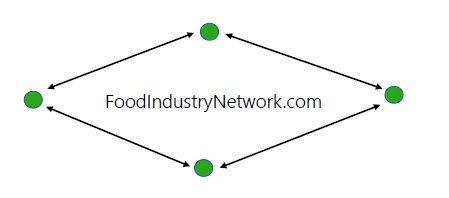Mobile Soil Technology Suite hits the road to farm events

A pair of trailers packed with state-of-the-art soil science and audio-visual equipment had what was referred to by Ontario Soil and Crop Improvement Association (OSCIA) officials as a “kick-off” on July 13 in Bothwell.
Based on the rave reviews received there and at later events in Elora and Rostock, they’re confident the Mobile Soil Technology Suite (MSTS) will become a fixture in Ontario’s farm country.
The unit displays the proceedings and data from in-field meetings so people can easily see the activities and information. It consists of one trailer containing a large screen and audio equipment and another packed with soil sensing and testing technology.
The suite was purchased by OSCIA through funding from the Ontario Ministry of Agriculture, Food and Rural Affairs (OMAFRA), and its ongoing operation is supported by partners including the Grand River Agricultural Society, Trillium Insurance, Tirecraft and Arthur-based Copernicus Educational Products.
At the Rostock event Aug. 5, hosted by Perth County’s soil and crop group, OSCIA’s Brittany Roka accepted a $10,000 cheque from Trillium Insurance to further support the suite.
For the compaction-themed event, Perth called in a group referred to as Ontario’s “Compaction Dream Team,” including OMAFRA specialists Ian McDonald and Alex Barrie, OSCIA’s Margaret May, independent crop consultant Peter Johnston and tire inflation innovator Jake Kraayenbrink.
The Dream Team, which has been hosting compaction days for a couple of years, has been quick to take advantage of the suite’s capabilities, Roka told the Rostock audience, and interest is growing among other groups.
“Honestly, the sky’s the limit on what we’ll be able to do with this technology,” Roka said. “If you have a different idea that’s crazy, we’d love to hear it.”
The MSTS is available for use by local Soil and Crop Improvement Associations for a small fee, and a somewhat larger fee for farm organizations not affiliated with OSCIA. The fee covers two technicians.
“We supply the technology and the know-how about running the technology. It’s up to the local group to organize what they want to do at the event.
“We are trying to keep the user fees low to make it affordable for the groups,” Roka added.
She told Farmtario the MSTS was taken through a couple of “soft launches” in 2021 but got its official kick-off on July 13 during the AgRobotics Field Tour near Bothwell.
Then came a soil health event at the Elora Raceway in July followed by the Aug. 5 compaction day at Rostock. There, more than 100 attendees saw the projection on-screen of real-time data generated by soil compaction sensors placed in Fred Knechtel’s recently harvested wheat field.
The sensor unit consists of a steel tube with a water-filled rubber hose closed at the end. As squeezing occurs on that hose, water pushes back into the steel tube and that registers as pressure on a gauge at the other end of the tube.
For the soil compaction event, sensors were placed at six-, 12- and 20-inch depths. As tractors and implements were driven over the sensors, the audience could see pressure applied in real time as data was transmitted to the mobile trailer screen in the form of a graph with different-coloured lines.
Roka said she expects that after OSCIA’s initial opportunities to showcase the suite this year, there will be enthusiasm for booking it for on-farm events.
A big attraction is the unit’s live streaming capabilities, she added. This allows proceedings to be shown in real time to people living too far away to attend. Live streaming could be even more advantageous if further waves of COVID-19 again force curtailment of in-person events.
Source: Farmtario.com

